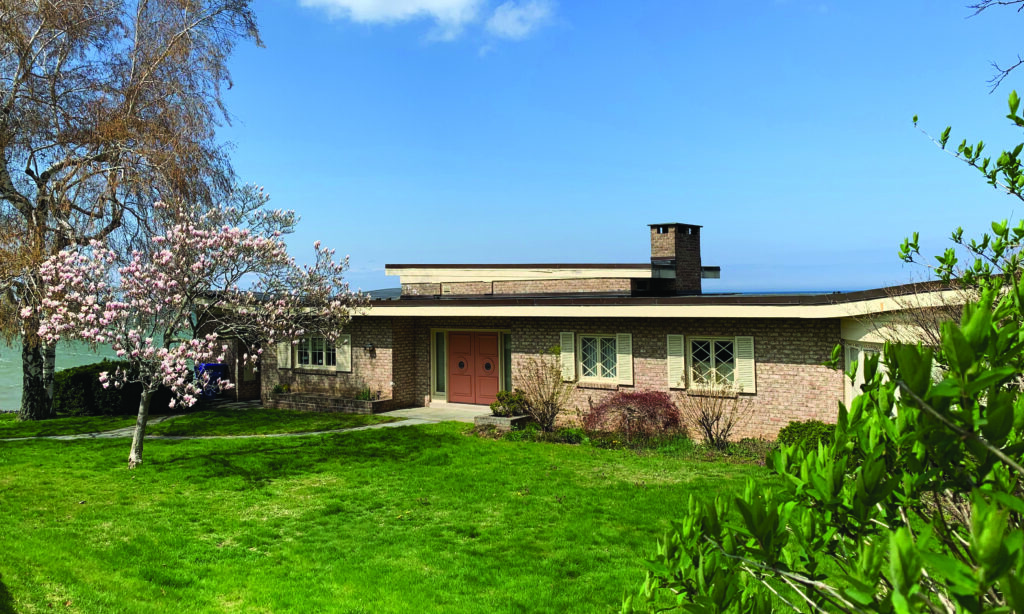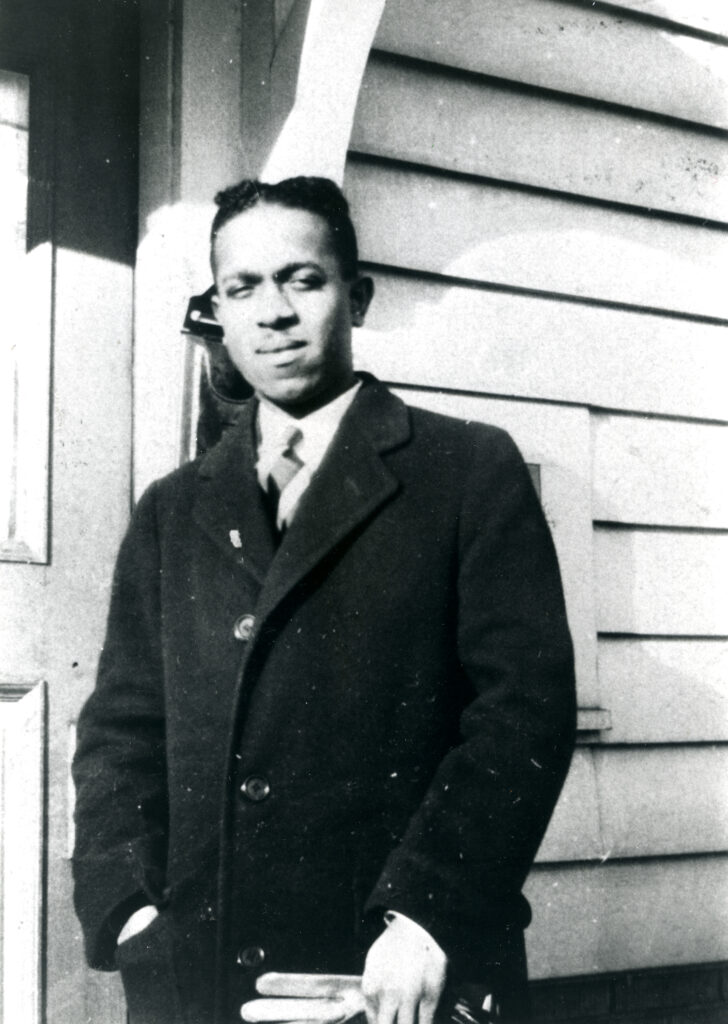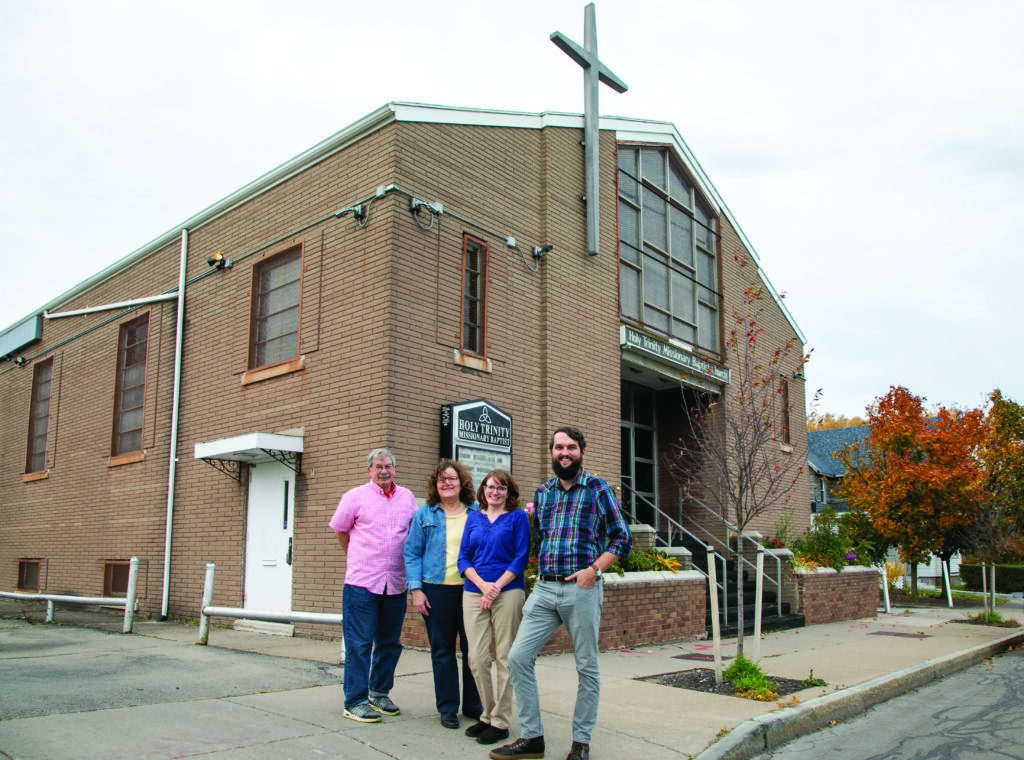The Boyd Project
The Rochester area is fortunate to have an active network of local history museums and historical societies, each offering residents the opportunity to explore the rich history of their community and even uncover the story behind their own historic homes. The often-underappreciated work of the dedicated volunteers behind these organizations is the reason our local heritage is so well preserved, providing invaluable resources for those eager to connect with and understand the past.

The Friedrich House on Edgemere Drive in Greece built c. 1955–56,
photo by William Sauers
The Greece Historical Society is taking its commitment to preserving local architectural history to a new level by delving into the life and legacy of Thomas W. Boyde Jr., a prolific architect who had an incredible impact on Rochester’s landscape from the 1930s through the 1970s. The initiative, called the Boyde Project, focuses on creating a thorough cultural resource survey, which is supported by grants provided by the Rochester Area Community Foundation, the Preservation League of New York State, and individual contributions. The project aims to uncover new facets of Boyde’s work and ensure his lasting impact on Rochester is both recognized and celebrated.
An unsung hero of mid-century modern design

Born on Christmas Day in 1905, Thomas Boyde made history as the first African American graduate of Syracuse University’s School of Architecture (1928) and as Rochester’s first African American architect. His versatile designs included private homes, public housing, commercial spaces, churches, and municipal buildings. Boyde’s architectural vision merged form with function, making high-quality design accessible to all. His work emphasized natural light, open layouts, and a seamless integration with the environment, creating spaces that were both practical and aesthetically striking for a range of community needs.
One of his early projects, completed in 1933, was Monroe Community Hospital. Known for its Gothic Revival architecture and intricate stonework, the building holds significant historical value and is considered a Rochester landmark. It is estimated that Boyde completed more than 700 projects in his lifetime, 300 of which are here in Rochester. His architecture embodied the beauty and ethos of mid-century design, but it was his contributions to economically disadvantaged communities that set him apart. He wasn’t just designing houses and businesses—he was creating homes and spaces that brought dignity, function, and style to underserved communities. Many of his projects provided affordable, well-designed housing solutions, reflecting his belief that great architecture should not be a privilege reserved for the wealthy.
Boyde is also recognized for his contribution to the genre of mid-century modern single-family homes, which showcased his distinct approach to functional yet stylish residential architecture.
Boyde’s attention to detail in material selection and his forward-thinking use of space made his homes both practical and aesthetically striking, reflecting the mid-century modern ethos of simplicity, innovation, and harmony with the surrounding environment.
A personal connection
Matt and Lia Kieren of Rochester own an original Boyde mid-century modern home. Lia was already familiar with Boyde’s work because her mother was an admirer of his designs. When she discovered that Boyde was the architect of the house she was considering purchasing, her interest was immediately piqued, and she felt both intrigued and excited at the prospect of owning a home designed by him.
“I never set out to buy a split-level house, but the flow of this floorplan is actually really great,” she says. “It has two large stone fireplaces and a curved wall, both signatures of Boyde’s. He was a very thoughtful designer. We have a gigantic yard, and the house is positioned intentionally on the lot to incorporate the best features of the outdoor space.”
“I love the history of this house and feel a strong responsibility to preserve and care for it,” she continues. “At the same time, it’s also my home—a place I truly enjoy living in. It brings me joy to balance the sense of stewardship with the comfort of everyday life here.”
The Boyde Project
The Greece Historical Society launched the Boyde Project to uncover, preserve, and bring long-overdue recognition to the architectural legacy of Thomas Boyde. People spearheading the project include Christopher Brandt, architect at Bero Architecture PLLC; Jeffrey A. “Free” Harris, independent historian and historic preservation consultant from Hampton, Virginia; Katie Eggers Comeau, former architectural historian at Bero Architecture PLLC; Gina M. DiBella, preservation consultant from Greece; Jenna Huizinga, Brighton Historian’s office intern and SUNY Geneseo student; and Alexis Rivers, research assistant.

William Sauers, president, Greece Historical Society, Gina DiBella, historic preservation consultant Katie Eggers Comeau, senior architectural historian, Bero Architecture
PLLC Christopher Brandt, project architect, Bero Architecture PLLC, photo by Michael Hanlon
With more than five decades of architectural work behind him, Boyde left an indelible mark on Rochester and the greater Western New York region. His designs have stood the test of time, speaking not only of an architectural era but of a man whose vision was ahead of his era. But despite his accomplishments, Boyde’s name is not as widely recognized as it should be—a gap that the Boyde Project seeks to address.
“We’re all passionate about preservation, and our main goal is to see these architectural works appreciated—that’s the first step toward ensuring their future,” says Comeau. “It’s especially important to address the historical underappreciation of Thomas Boyde’s contributions to Rochester’s architecture and history. While he’s often seen as a pioneer, the quality of his work isn’t always fully recognized. We’re working to correct some misconceptions and ensure Boyde receives the recognition he deserves as an outstanding architect.”
The group initiated a cultural resource survey that documents Boyde’s architectural contributions across Western New York. This survey not only catalogs his mid-century modern designs but also highlights his work on affordable housing projects for disadvantaged communities.“The detailed survey report will be designed in line with the State Historic Preservation Office guidelines,” says Comeau.
“This will serve as a template for property owners interested in pursuing National Register listing for their Boyde properties, simplifying the process for them by adapting our research. The report will offer an in-depth biography of Thomas Boyde, an evaluation of his work, and a comprehensive list of his buildings, with the potential for future publications or presentations.”
Through their research, the team has uncovered new materials, including drawings, correspondence, and interviews, which have expanded the scope of the project. Fundraising efforts are ongoing to incorporate these findings into the final documentation, ensuring that Boyde’s architectural impact is fully recognized and appreciated.
“It’s been exciting to dig through archives and piece together the projects Boyde worked on,” adds Brandt. “It feels a lot like detective work, uncovering hidden details and confirming his contributions to Rochester’s architectural history.”
Preserving a legacy
The Boyde Project is committed to ensuring that Thomas Boyde’s life and legacy are preserved and celebrated, bringing much-needed attention to his profound impact on Rochester’s architectural landscape. Without their dedication and passion, the full extent of Boyde’s work might have remained hidden. Their efforts continue to uncover new buildings and designs, deepening our understanding of his contributions. The project truly is a labor of love, one that will leave a lasting legacy for future generations of architecture enthusiasts to appreciate and learn from.
For more on Thomas Boyde and how to support this preservation project, visit greecehistoricalsociety.org/boyde-project.
Views: 19





